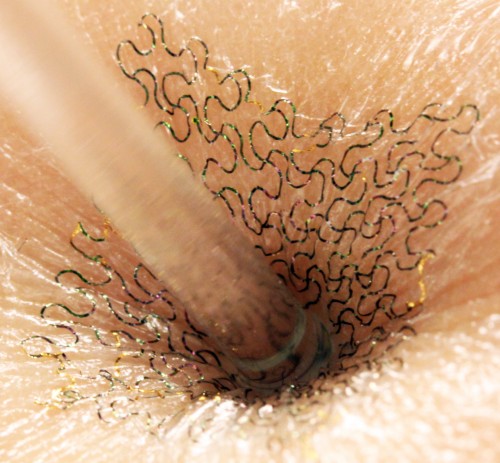Low power electronics and devices for active, modern lifestyles is getting edgy; the research is on for stuff that is wearable, epidermal, implantable - heck, even edible.
Smart skin, created by MC10, is an example of an 'epidermal electronic system. It contains micro-circuitry like transistors, sensors, transmitters and receivers that can get wrinkled, are bendable and stretchable, just like real skin, but retains damage-free function of all components.
Biomedical applications would allow wearers freedom of movement and eliminate adhesive tapes and wires attached to people. It works because smart skin is only 50 microns thick and light enough to stay attached to real skin without glue or adhesive, through surface forces. Thank you, physics. In terms of power consumption, it is so low that no battery will be needed for most applications. The device can use ambient sources of energy to harvest, like miniaturized solar cells or the movements of its wearer.
That's right, natural movements mean you provide your own power.

Smart Skin by MC10. Credit:MC10
The widespread use of implanted medical devices for long term monitoring of medical conditions is a challenge in terms of power. The ideal solution is a self sufficient power source that does not interact with its surroundings and batteries are impractical due to their need for replacement. It's available, right in our bodies, and it even has a cool name; 'energy scavenging '. The body represents an excellent source of thermal as well as mechanical energy. Thermal gradients are present on the surface of the skin and may be used for external skin mounted sensors.
Vibrational energy scavenging is also a viable source of renewable energy and devices powered by the human heartbeat have been created. Electricity to power implanted medical devices can be harvested from the pulse of a blood vessel, a gentle breeze, or the motion from walking.


